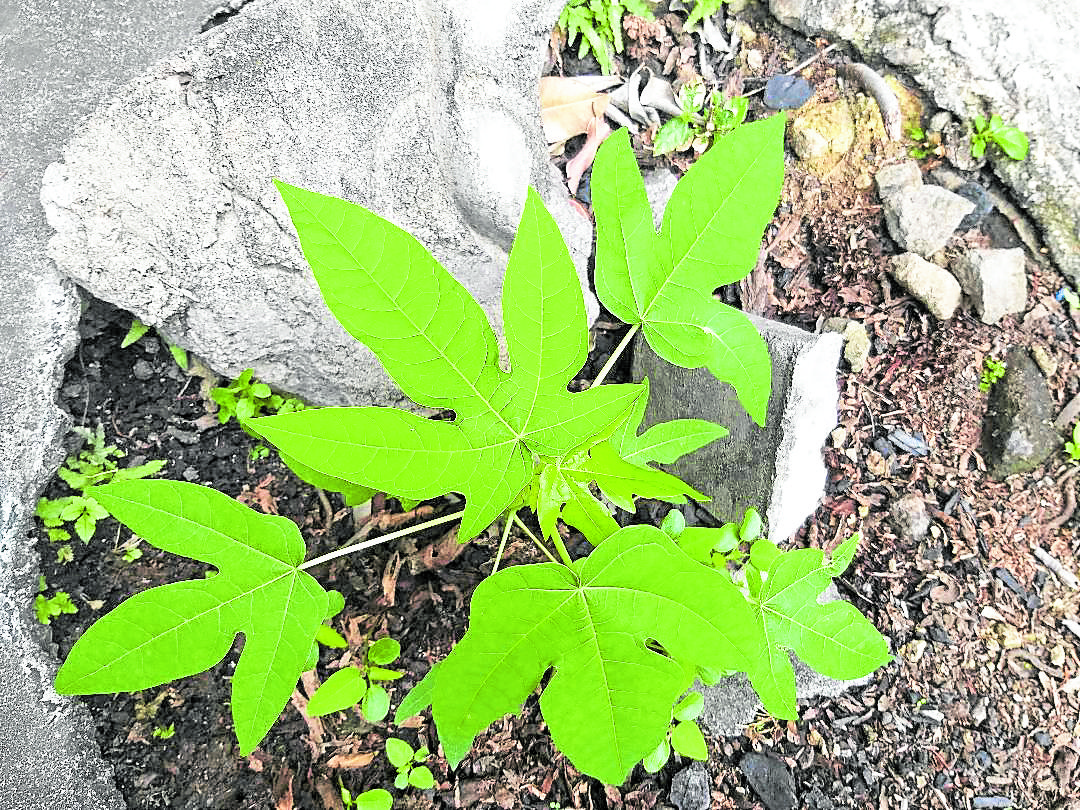Some of us can take this lockdown as “a time to smell the flowers.” For me, it’s a time to look at the weeds that grow in the cracks of my cemented backyard and in the water canal.
I didn’t have time to notice them before when my life was writing, flying or riding toward places to research. But having had to stay home and do 2,000 steps in my backyard for months, I’ve gotten to notice those weeds.
This isn’t the first time I looked down and was interested in those little green things that grew in cracks and crevices. When I was given the book “Ooops . . . Don’t Throw Those Weeds Away” (The Fern and Nature Society of the Philippines, 2002), by Maur Lichauco, cooking teacher and one of the authors, it made me walk with head down to see if I was trampling on “local edible and useful plants.”
Weeds aren’t supposed to be useful. They are treated like pests. Why do you think plant killers are called pesticides? They are pulled out, thrown away or burned. For Lichauco, the so-called weed that probably changed her mind was those with tiny cucumbers growing on vines in her Tagaytay farm. When she wanted to bite into those, her caretaker said they were poisonous. A bit of research and she found out that they were wild pipino and are edible. They tasted and looked like minicucumbers.
Decades later, many chefs would show me their supposed discovery of minicucumbers. I just smile to myself. Lichauco served it one lunch in what she called “Wild Forest Salad.” It had yampong leaves (morning glory), kamote tops (sweet potato), alugbati tips (Malabar spinach) and wild pipino.
The only edible weed I knew then was pansit-pansitan. But even if I did, I didn’t really get down, pull it up and add it to my salad vegetables. It’s difficult to change one’s mindset about weeds.

Itchiness and irritation
Well, now at least I have become curious about the weeds that grow in my backyard. Not curious enough to use them, but at least identify them with the help of the book.
There was what looked like the leaves of a gumamela plant, which turned out to be lipang-aso or lipang-kastila. Good thing the book warned that the leaves can cause “itchiness and irritation.”
There were the long-serrated leaves that looked like the plant Estrella. It’s supposed to have a white flower that earned for it the English name Star of Bethlehem. It was not in the book that Lichauco gave me, so I searched through “Philippine Herbs” (ArtPostAsia, 2017). The plant shouldn’t be used because it has a “toxic alkaloid that causes poisoning in animals and blindness in humans.”
The heart-shaped leaves reminded me of many plants such as morning glory. Or it could be makabuhay, the herb used to treat many ailments such as “wounds, ringworms, boils, scabies and other skin diseases.”
There is one with small white flowers. In the book, the leaves looked like lupo-lupo. If it is that weed, then in the Visayas, it is eaten like spinach. It is also made into soup with shrimps and fish.
One of the leaves intrigued me because of its shape. I thought it was marijuana, like I mistakenly did before with kamoteng kahoy or cassava. But it turned out that it was a budding papaya plant that the house help planted in that small hole where a coconut tree used to be.
Because of my unscientific way of identifying these plants, I dare not harvest any of those to add to my diet. But I must say that having greens around, no matter how few they are, or even if they’re weeds, makes for an interesting walk in my cemented backyard, and has me going back to my books to learn more about them.
Email the author at [email protected]








































